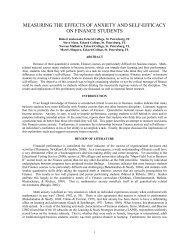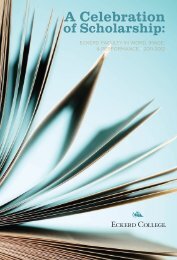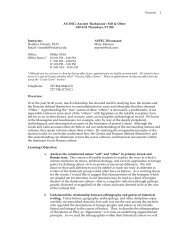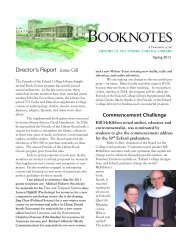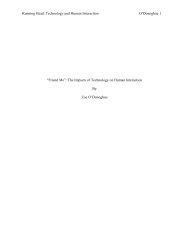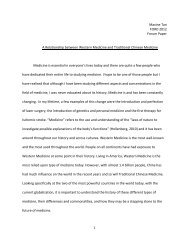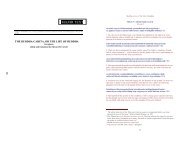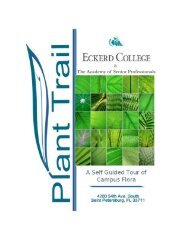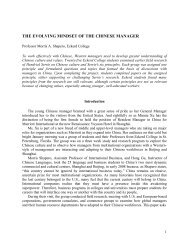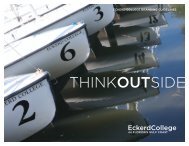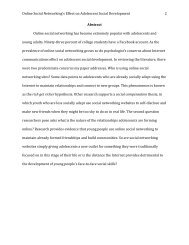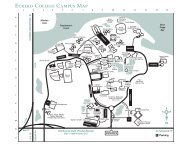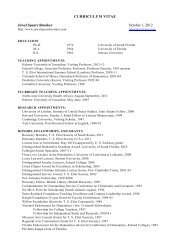Scientific and Lay Knowledge 1 Scientific and Lay Knowledge: The ...
Scientific and Lay Knowledge 1 Scientific and Lay Knowledge: The ...
Scientific and Lay Knowledge 1 Scientific and Lay Knowledge: The ...
Create successful ePaper yourself
Turn your PDF publications into a flip-book with our unique Google optimized e-Paper software.
<strong>Scientific</strong> <strong>and</strong> <strong>Lay</strong> <strong>Knowledge</strong> 8<br />
Tuatara, a phenomenon also experienced by researchers in different locations with different<br />
conservation threats (Ramstad et al., 2006, p. 456). Pinpointing theses common goals encourages<br />
more trust <strong>and</strong> makes collaboration more possible.<br />
Cooperative research is a method of involving non-scientists who possess knowledge on<br />
a topic in the research process. Teresa Johnson (2010) described a process of translating the<br />
knowledge of fishermen into scientific knowledge by means of a cooperative research project in<br />
the northeast U.S. (Johnson, 2010). As a result of the cooperative research, fishermen’s<br />
knowledge was incorporated into the management <strong>and</strong> decision-making process, fishermen<br />
found it easier to participate in management discussions, <strong>and</strong> both scientists <strong>and</strong> fishermen found<br />
increased levels of trust <strong>and</strong> underst<strong>and</strong>ing of each other’s motives (Johnson, 2010). Although<br />
the non-scientists still found their knowledge to be subject to legitimization by scientists, they<br />
gained the means to carry out future collaborations with scientists <strong>and</strong> resource managers<br />
concerning something that is important to their lifestyles (Johnson, 2010). Ramstad et al.<br />
determined that TEK provided a rich source of information on a highly threatened <strong>and</strong> little-<br />
studied organism, <strong>and</strong> discrepancies between natives’ knowledge of the Tuatara <strong>and</strong> scientific<br />
findings provided direction for further research on conservation of the species (Ramstad et al.,<br />
2006, p. 462). No single explanation of the world is complete, <strong>and</strong> by incorporating different<br />
worldviews in research, even if only through the collaboration of non-scientists in the research<br />
process beginning to end, it becomes easier to view the world holistically—not as a series of<br />
systems <strong>and</strong> theories but as a tapestry of relationships.<br />
<strong>The</strong> Role of Higher Education in Spanning the Boundary<br />
Higher education has a unique role in breaking down the barrier that has developed<br />
between scientific knowledge <strong>and</strong> lay knowledge. Higher educational institutions must first make



